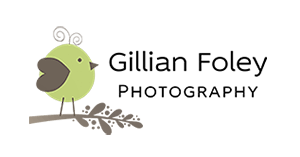Using Tags For Searching
Using Tags For File Searching
If you’re anything like me and have taken thousands of photographs over the years, you’d have a hard drive (and an external HD or five!) chock-full of photographs. Luckily for me, when I download images using Lightroom, the software automatically organises it for me in customised folders, with tags I’ve specified. Of course, you may have your own organisational system for your images – however you download them from your camera or even your smartphone.
I was going through my archives a few weeks ago and after finding so MANY long-forgotten images of my boys when they were younger, I got a bit obsessed with wanting to find certain pics over a span of a year or two for scrapbooking. Luckily, my images were tagged, so finding some of the ones I was looking for was relatively easy. Of course, before I had Lightroom (and indeed with a much older operating system), tagging wasn’t an option, so I have a good many images untagged (laborious process!!). This might be the case with you, so I put together a “how to” on tagging photos for easy searching in your computer’s file system. I’m using Windows 8.1, so the screen captures may be different to yours, depending on the OS you’re running.
| In this detailed listing, all of my sample photographs in this folder are all untagged. (To display the tag column, right-click on the column header and select tag from the list.) |
 |
| Changing the display to large icons, I have an idea of the images in the folder. I’d like to tag all the photographs of my older son, Matthew. |
 |
| There are four images to tag, so I select the images and right-click and click Properties in the box the pops up. |
 |
| By selecting the Details tab at the top of the box, I can enter the tags for these photographs. You could tag images with dates, special events, etc – as long as it’s relatively easy to remember should you need to search for them later! Multiple tags are allowed, separated by commas. I’m using Matt’s name to tag these images. Click ok to save the tags. |
 |
| The tags for those images are now listed in the details view of the folder contents. |
 |
| To search for the images using the tags (and you could do this from the root directory and search multiple folders/the entire computer in this manner), enter the search details in the search box. In Windows File Explorer, this is on the top right.Voilà! The search yields a result-set of the tagged images. |
 |
Finder for Mac works in a similar way as mentioned above and if you’re a Mac user, things are even more simplified by the use of the iPhoto application. The software automatically sorts photos into events, faces, latest import, any flagged images, etc. If you wanted to further group photos into specific Albums, simply select the photos you’d like, right-click and add to a new album (which you can then name). The new album will now appear in the left-hand pane. You can still tag photos with keywords, as mentioned above. Ensure that Keywords have been turned on by clicking View and checking the Keywords option. This will now display the option on the right-hand pane. Simply select the image(s) you’re like to tag and enter the keyword(s). Again, filtering images based on specified tags is simply a case of entering the keywords into the search. All tagged images will be displayed in the result-set.

Hopefully, this is one of life’s little hacks that will make things easier for somebody out there! If you have heaps of untagged photographs floating around your hard drive, this is a great way to filter them when necessary – as in my case, for the backlog of scrapbooking I need to get through!
Happy tagging! :) ~ Gill
